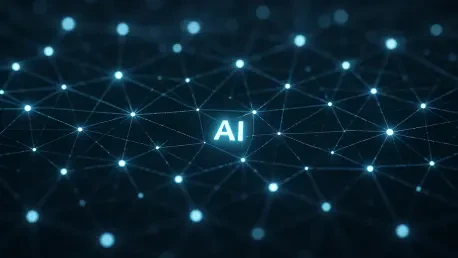Overview of Data Migration in Today’s Industry
In an era where businesses pivot rapidly to digital solutions, data migration stands as a cornerstone of transformation, with over 80% of enterprises undertaking system upgrades or cloud transitions annually. This critical process, which involves transferring data between systems, underpins major initiatives like adopting new software, consolidating databases, or moving to cloud environments. The stakes are high, as seamless migration ensures continuity, while failures can cripple operations and erode customer trust.
The complexity of data migration often collides with tight deadlines and constrained budgets, creating a perfect storm of challenges for project managers. Historically, this has been framed by the Project Management Triangle, a model emphasizing the trade-offs between cost, quality, and time. Balancing these elements has long defined project success, but in data migration, the stakes are amplified by the risk of data loss or system downtime.
This report delves into how artificial intelligence (AI) is reshaping this landscape, challenging the traditional constraints of the triangle. By examining innovative tools and emerging trends, the focus shifts to a groundbreaking approach that promises to redefine how businesses execute data migration projects, setting a new standard for efficiency and effectiveness.
Understanding Data Migration and the Project Management Triangle
Data migration is a pivotal process for modern enterprises, enabling system upgrades, cloud adoption, and broader digital transformation strategies. It encompasses transferring vast volumes of data across platforms while maintaining integrity, a task integral to staying competitive in a tech-driven market. The scope often spans diverse industries, from finance to healthcare, where outdated systems must give way to agile, scalable solutions.
At the heart of managing such projects lies the Project Management Triangle, a framework that has guided project execution for decades by highlighting the interdependence of cost, quality, and time. Traditionally, optimizing one element often means sacrificing another—rushing a project might cut costs but compromise quality, while prioritizing precision can inflate budgets or delay completion. This model has been a bedrock for decision-making, shaping how resources are allocated and risks are mitigated.
In data migration, the triangle’s constraints are particularly pronounced due to the intricate nature of the task. Long timelines stem from manual processes, high costs arise from specialized labor, and quality risks loom large with potential data errors. These challenges underscore the need for a fresh approach to break free from the rigid trade-offs that have long governed such projects.
The Traditional Challenges of Data Migration
Pain Points in Conventional Methods
Traditional data migration methods are fraught with inefficiencies that exacerbate project constraints. Manual data mapping, where fields in one system are aligned with another, often consumes weeks and is prone to human error. Similarly, validating data for accuracy and completeness remains a labor-intensive endeavor, increasing the likelihood of mistakes that go unnoticed until post-migration.
These hurdles directly amplify the trade-offs within the Project Management Triangle, forcing project teams to make difficult choices. Rushing through manual processes to meet deadlines frequently leads to budget overruns as additional resources are deployed to fix errors. Conversely, striving for meticulous quality can extend timelines significantly, stalling critical business updates and testing stakeholder patience.
Impact on Business Operations
The ripple effects of migration challenges extend far beyond project boundaries, often disrupting core business functions. System downtime during migration can halt operations, leading to lost revenue and frustrated customers. Moreover, data inconsistencies post-migration may require costly rework, further straining budgets and diverting focus from strategic goals.
Such issues also pose a severe risk to data integrity, a non-negotiable asset for any organization. Errors or incomplete transfers can undermine decision-making and compliance, especially in regulated sectors. These consequences highlight the limitations of the traditional triangle model, where balancing cost, quality, and time often seems an insurmountable barrier in the context of data migration.
AI as a Game-Changer: Introducing Migratek’s ENDEX
The advent of AI marks a turning point in addressing data migration woes, offering tools that challenge long-standing inefficiencies. Migratek’s ENDEX data standardization platform emerges as a trailblazer in this space, harnessing AI to automate critical aspects of the migration process. Designed to tackle the root causes of delays and errors, this solution reimagines how projects can be executed under tight constraints.
ENDEX leverages advanced algorithms to handle tasks like data mapping and error detection with unprecedented speed and accuracy. By automating these once-manual processes, it directly confronts the core limitations of the Project Management Triangle, enabling simultaneous improvements in time, quality, and cost. This capability signals a departure from the era of inevitable compromises, setting a new benchmark for efficiency.
The platform’s impact is evident in its ability to streamline complex migrations while maintaining high standards. Businesses adopting ENDEX report not just faster project completion but also enhanced data reliability at a fraction of the traditional expense. This convergence of benefits positions AI as a transformative force, with ENDEX leading the charge in redefining industry norms.
Breaking Down the Triangle: How ENDEX Redefines Each Element
Accelerating Timeframes
One of the standout features of ENDEX is its capacity to drastically shorten migration timelines through automation. Tasks that once spanned weeks, such as aligning data fields across disparate systems, are now completed in days or even hours. This acceleration stems from AI-driven processes that eliminate repetitive manual work, allowing teams to focus on strategic oversight.
The resulting speed offers tangible benefits, notably in minimizing business disruption during migration. Companies can achieve faster go-live scenarios, ensuring that new systems are operational with minimal downtime. This rapid turnaround is a game-changer for industries where every hour of delay translates to significant financial loss or competitive disadvantage.
Enhancing Data Quality
Beyond speed, ENDEX excels in bolstering data quality, a critical concern in any migration project. The platform employs AI to automatically detect errors, fill in missing values, and standardize data labeling across systems. This ensures accuracy and consistency, reducing the ambiguity that often plagues manual efforts and leads to downstream issues.
By curtailing the need for human intervention, ENDEX enhances data integrity, a cornerstone of reliable business operations. The automated checks and validations mean fewer discrepancies slip through, providing confidence in the migrated dataset. This focus on precision redefines quality standards, proving that speed need not come at the expense of excellence.
Reducing Costs
The financial implications of ENDEX are equally compelling, as shorter timelines and reduced manual effort translate directly into lower expenses. Automation cuts down on the need for extensive labor hours, slashing costs associated with specialized teams or overtime. This efficiency is a boon for organizations operating under tight budgetary constraints.
Further cost savings emerge from the diminished likelihood of post-migration issues, which often require expensive fixes. ENDEX also streamlines target system configuration, reducing the resources needed for setup and testing. Collectively, these factors demonstrate how AI can dismantle the cost barrier of the triangle, delivering value without compromise.
The Paradigm Shift in Project Management
AI-driven tools like ENDEX are spearheading a broader revolution in project management, moving beyond incremental tweaks to a wholesale redefinition of possibilities. The notion of inevitable trade-offs is being upended, as technology enables project managers to optimize cost, quality, and time concurrently. This shift is not merely a trend but a fundamental rethinking of project execution principles.
The impact extends to how success is measured, with tools like ENDEX allowing teams to achieve ambitious goals without sacrificing critical elements. This liberation from traditional constraints empowers professionals to prioritize strategic outcomes over logistical compromises. It marks a pivotal moment where technology becomes an enabler of holistic project excellence.
Looking at the bigger picture, this transformation signals an industry-wide move toward innovation-driven methodologies. As AI continues to evolve, its integration into project management promises to unlock new efficiencies across diverse domains. The optimism surrounding this shift reflects a growing consensus that the old rules no longer apply in an era of intelligent solutions.
Future Implications and Industry Outlook
The long-term potential of AI in data migration and project management is vast, with platforms like ENDEX paving the way for widespread automation adoption. As more organizations recognize the value of such tools, the industry is likely to see a surge in demand for scalable, AI-powered solutions. This trend could redefine operational benchmarks over the coming years, particularly from 2025 to 2027.
Emerging opportunities for innovation are also on the horizon, including the integration of AI with complementary technologies like machine learning or blockchain for enhanced security. Additionally, the application of these tools might expand beyond data migration to other complex project types, such as system integrations or large-scale IT overhauls. These possibilities hint at a dynamic evolution in project execution strategies.
External factors, such as shifting business needs and rapid technological advancements, will undoubtedly influence this trajectory. Regulatory changes and the growing emphasis on data privacy could further shape how AI tools are developed and deployed. Navigating these variables will be crucial for sustaining momentum and ensuring that the benefits of automation reach their full potential across sectors.
Closing Reflections and Path Forward
Looking back, the exploration of AI’s role in data migration revealed a profound shift, as tools like Migratek’s ENDEX dismantled the rigid constraints of the Project Management Triangle. The detailed analysis underscored how automation delivered unprecedented speed, quality, and cost savings, challenging decades-old assumptions about project trade-offs. This marked a defining moment in how technology reshaped industry practices.
Moving forward, businesses are encouraged to embrace AI solutions as a strategic imperative, integrating platforms like ENDEX to stay ahead in a competitive landscape. Stakeholders should prioritize pilot programs to test scalability and address unique operational needs, ensuring seamless adoption. Collaboration between tech providers and enterprises could further refine these tools, tailoring them to diverse challenges.
Beyond immediate implementation, a sustained focus on upskilling teams to leverage AI capabilities emerges as a critical next step. Investment in training and change management will amplify the impact of such innovations, fostering resilience against future disruptions. This proactive stance promises to cement AI as an enduring pillar of project management success, guiding the industry into uncharted but promising territory.









